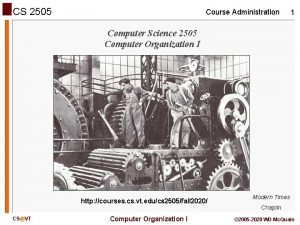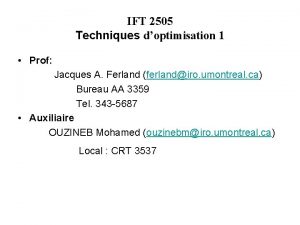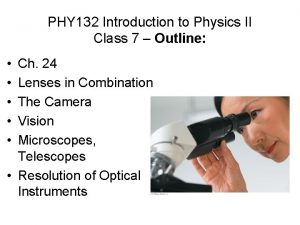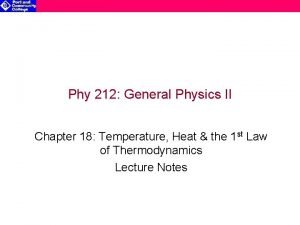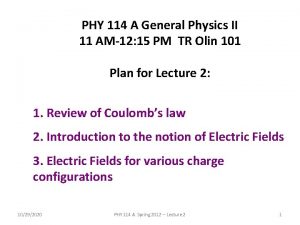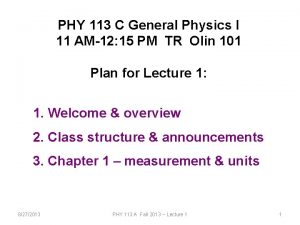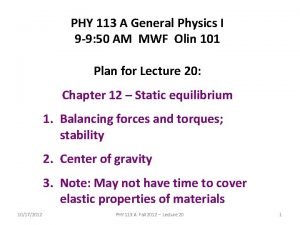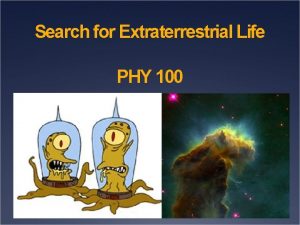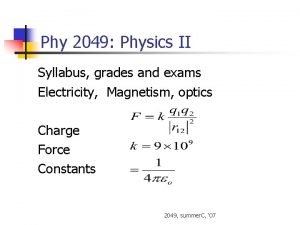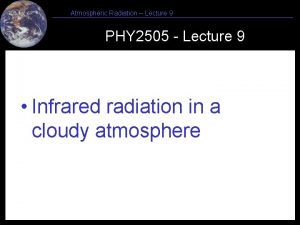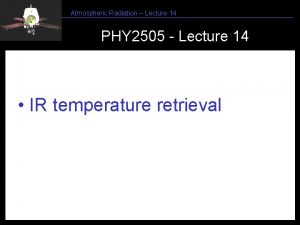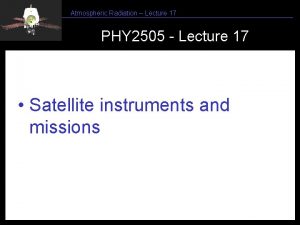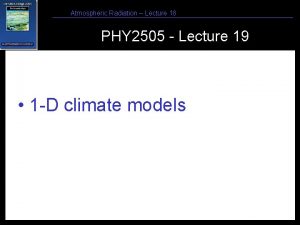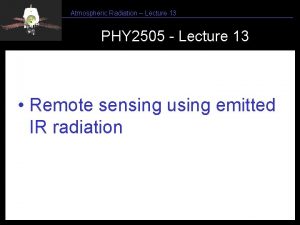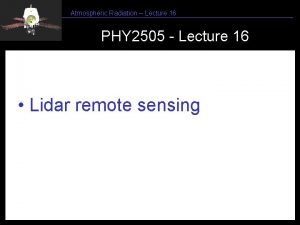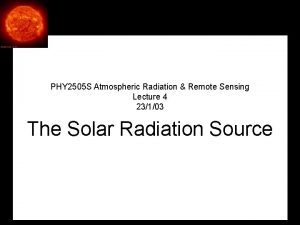Atmospheric Radiation Lecture 18 PHY 2505 Lecture 18














- Slides: 14

Atmospheric Radiation – Lecture 18 PHY 2505 - Lecture 18 • Radiation and Climate 9/15/2021 1

Atmospheric Radiation – Lecture 18 Overview • This lecture – Review of Liou – IPCC definitions of radiative forcing • Next lecture – 1 -D radiative-convective climate models – IPCC results • Final lecture – Climate and planetary atmospheres 9/15/2021 2

Atmospheric Radiation – Lecture 18 Review Chapter 2 3 4 4 Solar variability Solar absorption Thermal & scattering; aerosol RT modelling absorption & emission; 8 Satellite observation & retrieval atmospheric gases RADIATIVE FORCINGS OBSERVATION/VALIDATION Intergovernmental Panel on Climate Change 9/15/2021 3

Atmospheric Radiation – Lecture 18 Solar variability Diurnal & latitudinal variation 9/15/2021 Measurement Structure 4

Atmospheric Radiation – Lecture 18 Solar absorption & scattering Solar absorption bands Rayleigh scattering Radiative transfer equation Mie scattering 4 3 2 1 Characteristics of aerosols 9/15/2021 5

Atmospheric Radiation – Lecture 18 Thermal absorption & emission Spectroscopy & line shape Radiative transfer equation I(t, m)=Boexp(-t 1 -t 2 -t 3)+ B 1 exp(-t 2 -t 3) + B 2 exp(-t 3) + B 3 Boexp(-t 1 -t 2)+ B 1 exp(-t 2)+B 2 Boexp(-t 1)+ B 1 Bo 9/15/2021 6

Atmospheric Radiation – Lecture 18 IPCC • Formed under WMO and UNEP in 1988 to deal with potential global climate change • Working Group I assesses the scientific aspects of the climate system and climate change. • Working Group II assesses the vulnerability of socio-economic and natural systems to climate change, negative and positive consequences of climate change, and options for adapting to it. • Working Group III assesses options for limiting greenhouse gas emissions and otherwise mitigating climate change. • The Task Force on National Greenhouse Gas Inventories is responsible for the IPCC National Greenhouse Gas Inventories Programme. 9/15/2021 7

Atmospheric Radiation – Lecture 18 IPCC: major findings 9/15/2021 8

Atmospheric Radiation – Lecture 18 IPCC: radiative forcings 9/15/2021 9

Atmospheric Radiation – Lecture 18 IPCC: radiative forcings • What is the IPCC definition of radiative forcing? • Sensitivity parameter 9/15/2021 10

Atmospheric Radiation – Lecture 18 IPCC: Global warming potential 9/15/2021 11

Atmospheric Radiation – Lecture 18 IPCC: Global warming potential 9/15/2021 12

Atmospheric Radiation – Lecture 18 IPCC: Global warming potential 9/15/2021 13

Atmospheric Radiation – Lecture 18 IPCC: Global warming potential 9/15/2021 14
